Gone are the days of walking past hospital walls lined with whiteboards, littered with scribbles about patient updates. Modern healthcare requires precision, speed, and clarity.
Welcome to the era of patient tracking systems, a vital advancement in the modern healthcare landscape. By digitizing the information that once was found sprawled across whiteboards in a clinical setting, patient tracking systems can help your organization deliver a higher standard of communication, collaboration, and patient care in a perioperative environment.
Evolving Past the Whiteboard and Going Digital
Whiteboards, once ubiquitous in hospitals, served as the primary tool for communicating patient information and updates. Though effective in their time, they were susceptible to errors, accidental erasures and lacked real-time updating capabilities. The worst part? Once the information was removed from a whiteboard, it was gone forever unless it was preserved elsewhere.
Transitioning from such manual methods has been imperative to improve the quality and speed of healthcare services. Patient tracking software and other similar software solutions bring accuracy and efficiency.
Enhanced Staff Assignment
In the past, assigning staff to rooms and cases was a time-consuming task, often riddled with resource conflicts, inaccuracies and last-minute changes. With patient tracking systems, the time required to manage and assign staff is drastically reduced.
Staff can be notified of their assignments through dynamic visual display, allowing them to be where they’re needed without delay. This not only improves the efficiency of the operating environment but also ensures that the right personnel is always ready to support every procedure.
Elevated Administrative Workflow
Administrative tasks can often bog down the bandwidth of providers and staff alike. This results in fewer hours devoted to clinical responsibilities when more phone calls need to be answered as well as the need to always return to a single device to update information.
With a patient tracking system, the information is constantly accessible as providers and staff provide updates, including those who may not be physically present. This, in turn, drastically reduces phone calls, allowing you to run your day more efficiently and focus on real-time tasks at hand.
Additionally, with the device-agnostic nature of patient tracking systems, patient information can be processed and updated digitally from any device used in the hospital. From desktop computers to tablets, any authorized user and device can become your virtual whiteboard.
Better Patient and Family Satisfaction
One of the most anxiety-inducing aspects for families during surgeries is the uncertainty. Where is my loved one? How is the procedure progressing? Patient tracking systems tackle this challenge head-on.
With features that allow family members to receive near real-time updates on the activity of their loved ones, the stress associated with waiting is greatly alleviated. Through text, email notifications, dedicated portals, and status boards, families are kept in the loop every step of the way.
Moreover, for those who cannot or choose not to stay on-site, they can remain informed and connected, enhancing the overall experience. This enables them to be more involved in their loved one’s treatment and to better plan their days around an important operation or procedure.
Improved Physician Collaboration
In a surgical setting, communication between surgeons and anesthetists is paramount. Mobile applications linked with patient tracking systems are game-changers in this arena.
Surgeons and anesthesia professionals can receive instant notifications about any changes in schedules. This not only keeps everyone on the same page but also allows medical professionals to look into the key details of their cases from a single source. The result? Enhanced collaboration, reduced errors, and greater ability to prioritize the patient experience.
Better Documentation
Good documentation is the backbone of healthcare operations, ensuring accuracy and facilitating seamless communication among healthcare professionals. With patient tracking systems integrated with a comprehensive perioperative solution, robust documentation is less of a tedious chore. These systems improve productivity by streamlining the documentation process.
The integration with scheduling software ensures that accurate patient information is always at the point of care, which in turn reduces the need for frequent phone calls and cross-checks. Additionally, with heightened accuracy and organization, compliance becomes less of a hurdle, making these systems a boon for both healthcare providers and patients.
Get a Better Patient Tracking System with Picis
Whiteboards had their time, and they served us well. But in an era where precision, efficiency, and comprehensive care are paramount, patient tracking systems are the beacon leading the way.
Embracing this technology means taking a step into the future of healthcare—a future where every patient receives the best care possible and hospitals operate at their peak potential. The evolution is here, and it’s time to be part of it.
If you are ready to implement an elevated standard of patient tracking in the perioperative environment at your organization, let Picis solutions help. At Picis, we specialize in developing innovative software solutions, including sophisticated patient tracking systems, that support all aspects of perioperative operations. In turn, your providers are able to perform with greater confidence and your patients are able to receive a better level of care.
With Picis’ device-agnostic SmarTrackNext system in place, not only can you enhance your patient tracking capabilities, but you can also keep your patients’ family members and loved ones notified of their progress. In turn, this creates potential to reduce hundreds of phone calls throughout the day and spend more time on core responsibilities.
To learn more, contact us to see how our solutions can assist you. Tel. +1 781 557 3000 or info@picis.com.






